Search Results
BART Board schedules Fiscal Year 2015 budget meetings
The BART Board has set the following calendar for discussion and adoption of the Fiscal Year 2015 Budget: May 8, 2014, 9am: Preliminary Budget Overview: Sources, Uses, and Service Plan May 22, 2014, 5pm: Public Hearing on FY15 Budget Resolution to Adopt FY15 Proposition 4 Appropriations Limit FY15 Notice of
BART Police release image of Fruitvale Station stabbing suspect
The BART Police Department today released images of a suspect being sought in connection with a stabbing that took place onboard a train at the Fruitvale Station on Friday afternoon. The incident happened at 2:48 pm on March 22, 2019. The pictured suspect was involved in a fight with another male on a
BART's Aileen Hernandez is working to increase access and opportunity
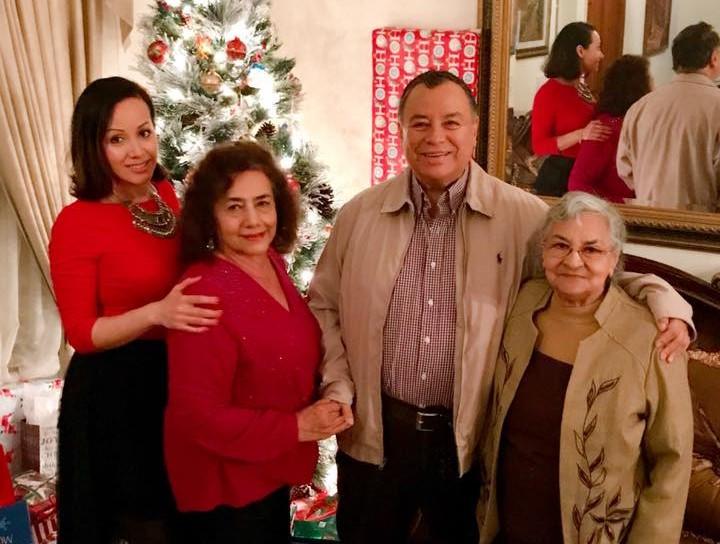
Aileen Hernandez with her mother, father, and grandmother.
This Hispanic Heritage Month, BART is proud to celebrate employees with Hispanic and Latino heritage, who enrich our organization and the community at large. Over 15% of BART's workforce identifies as Hispanic and Latino, and we will be celebrating them throughout the month with stories and internal gatherings. Read our first profile, of BART's new Director of the Office of Civil Rights, Rudy Garza, here.
Hispanic Heritage Month runs from Sept. 15 to Oct. 15.
After Aileen Hernandez’s parents came to the United States from Colombia in 1968, they moved around a lot – Philadelphia, Los Angeles, Sacramento, and finally the Bay Area, where Aileen was born.
When she talks about her parents’ journey in search of better jobs and opportunities, Hernandez doesn’t just think about them, she thinks about the constellation of people surrounding them.
“My parents didn’t do it all alone. People were helping them,” she said. “That’s something I want to continue because I've been blessed by being a receiver of that help through many great mentors in my educational and professional life.”
Hernandez is the BART Interim Manager for Grants & Funding Advocacy Division, Funding Strategy Department. She has spent her career — in Sacramento, New York, and Bay Area— running complex programs to ensure the ladder of opportunity extends to those who need it most.
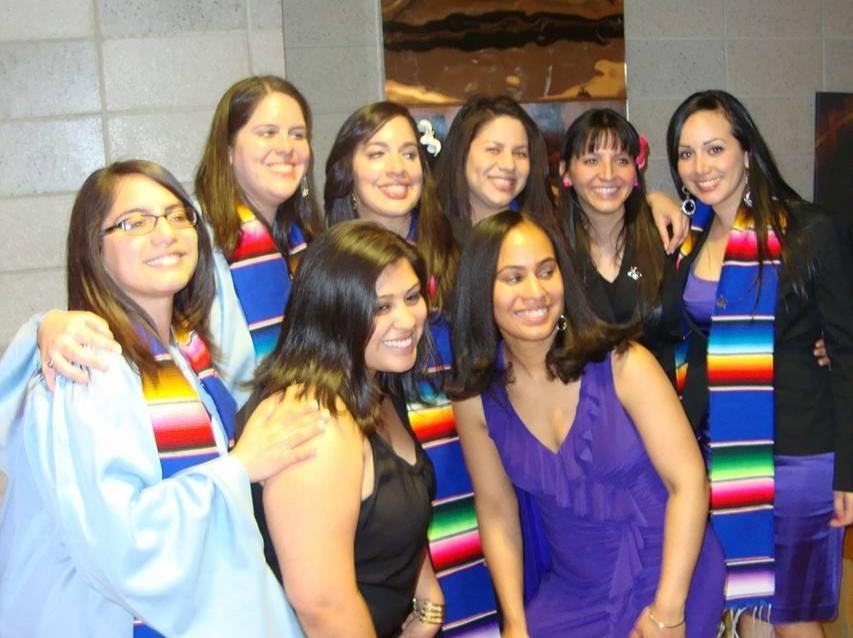
Aileen at her Columbia University graduation in 2010.
Her past work connected first-generation community college students to four-year universities, given military veterans access to job training, expanded workforce development services in San Francisco, and ensured BART provides opportunities for small businesses and Disadvantaged Business Enterprises (DBEs) to get access to construction contracts.
In her current role, Hernandez makes sure BART has access to local, state, and federal funds. Recently, Hernandez and her team navigated and implemented the complex funding strategy for BART’s new fare gates.

“I really enjoy my work because I know that every dollar we bring to BART is going to have an impact and create a better system for our customers,” she said. “And those customers are real people. It’s our moms, grandparents, tourists, and people with disabilities.”
Hernandez is all about finding ways to uplift Latinos, and for her, Hispanic Heritage Month is an opportunity to educate others about the rich tapestry of Latino culture and expand how people think about who makes up the community.
“It's an important time to promote and educate people about Latino culture and their contributions to the U.S.,” she said. She is especially passionate about bringing attention to the communities that do not get as much representation in the media or the corridors of power.
“I think there's a huge lack of education about the history of Central America and South America,” she said. “Not everyone knows the about the colonization of America, migrations across the continent, and the reasons why people migrated to California and or why they never left.”
Hernandez grew up in the Bay Area, but her family returned to Colombia for a spell before moving back to the U.S. when she was 12. She went to Chabot College to obtain an associate’s degree and UC Davis for her bachelors. Along the way she participated in student government and ran cross country before going to work for California Community Colleges in Sacramento.

Aileen and rest of the Chabot College Women’s cross-country team in 1998.
After a spell in the workforce, Hernandez enrolled in a social work program at Columbia University. She stayed in New York after graduation, training workers for jobs in transportation and launching a veteran's career center before her work brought her back to the Bay Area. But her time in New York had a long-lasting impact on her.
In New York City, Hernandez was exposed to a vibrant hub of Colombian and Colombian American culture. New York has the second-highest concentration of Colombian Americans in the United States after Florida. Hernandez often found it difficult to see her Colombian culture reflected in California, where Mexican American culture is more prevalent.
“You don't see yourself in movies or shows,” she said. “In California, people always assume you're Mexican. So you have to explain that you're not Mexican, and how you're different, and why you're different.”
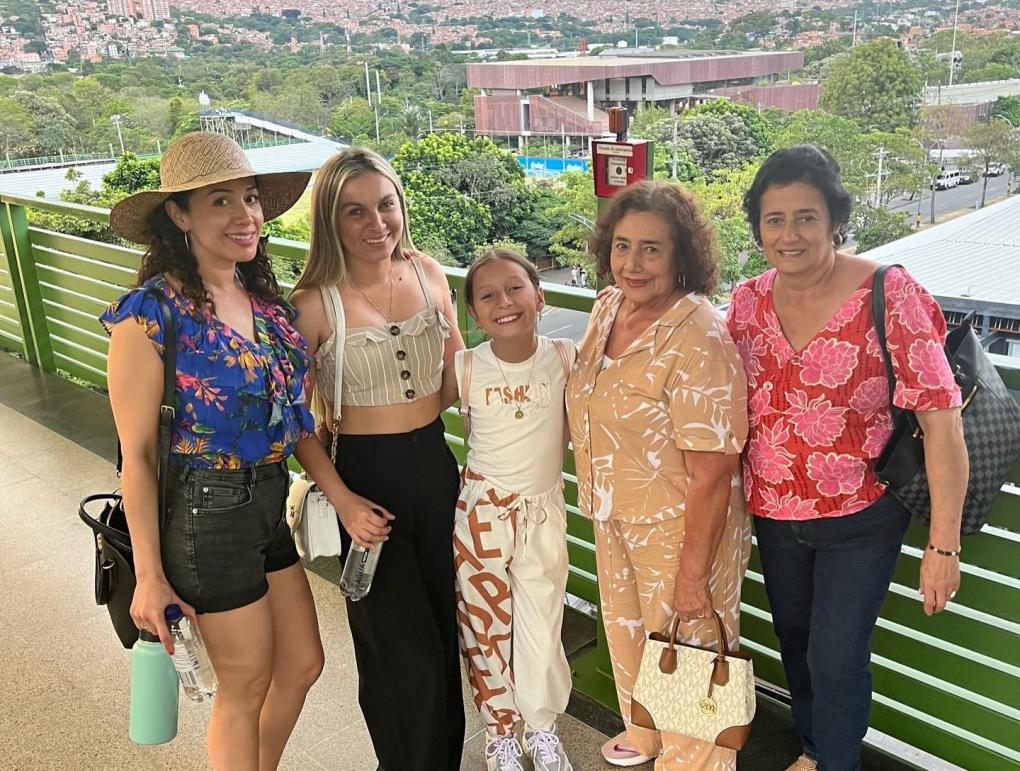
Aileen with her mother, aunt, and cousins in Medellín, Colombia, in 2023.
In New York, she helped form a foundation to fundraise money for high school students of Colombian descent going to college. The group brought together doctors, lawyers, journalists, and fashion designers of Colombian descent to inspire youth and expand their conceptions of their futures. She continues that work to this day.
Hernandez and her colleagues have recently started a new affinity group at BART called ¡Vamos! for BART employees who identity as Latino, Latinx, Latina, Chicano, and Chicana. ¡Vamos! will work to promote cultural awareness and highlight the community’s efforts and contributions to BART and the Bay Area.

Aileen taking BART with her bike in 2020.
Dispatchers are the “behind-the-scenes heroes” of BART Police
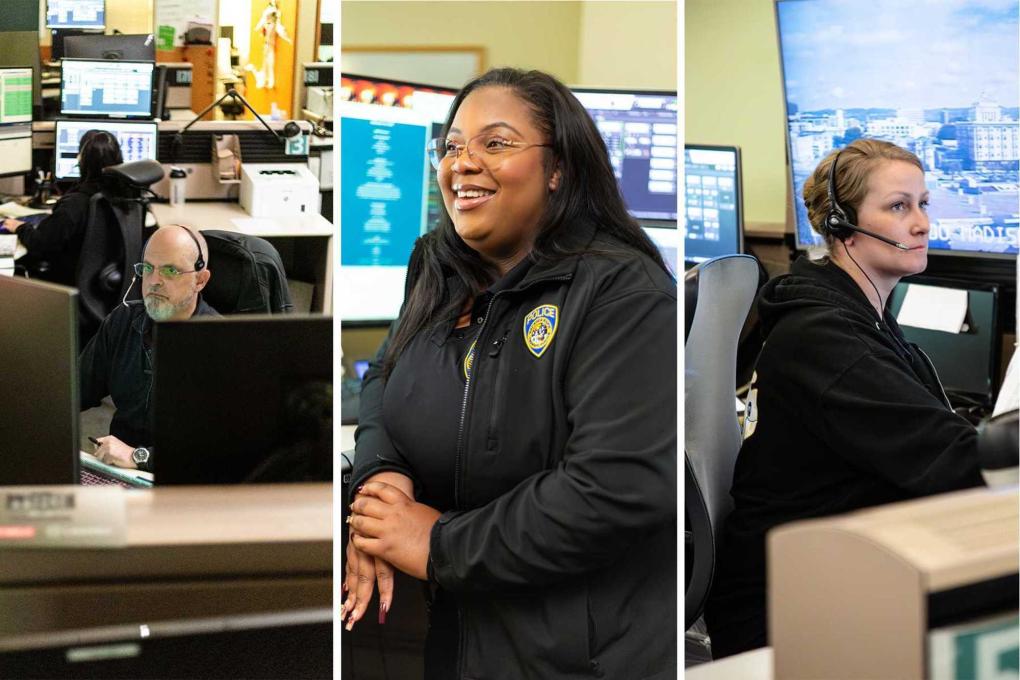
BART is currently hiring entry-level and lateral dispatchers. Salaries start at $81,000 - $99,000 annually, and BART Police is offering a $15,000 hiring incentive. The role include premier benefits, including enrollment in the CalPERS pension retirement program. To be considered, applicants must possess a high school diploma, GED, or recognized equivalent.
For more information, download the recruitment flyer and visit joinbartpd.com/police-dispatcher.
(Pictured above: Dispatchers Robert Lowell, Taylor Fulmore, and Kasey Frost at work.)
You won’t hear a phone ring for long in the BART Police Dispatch Center.
“We answer the phone after two or three rings almost always,” said BART Police Dispatcher Taylor Fulmore. “You are going to get a real human on the phone very quickly."
BART Police has one of the fastest response times in the nation for major incidents, averaging 4 minutes and 25 seconds for Priority-One emergencies. BART’s skilled dispatchers play an essential role in makin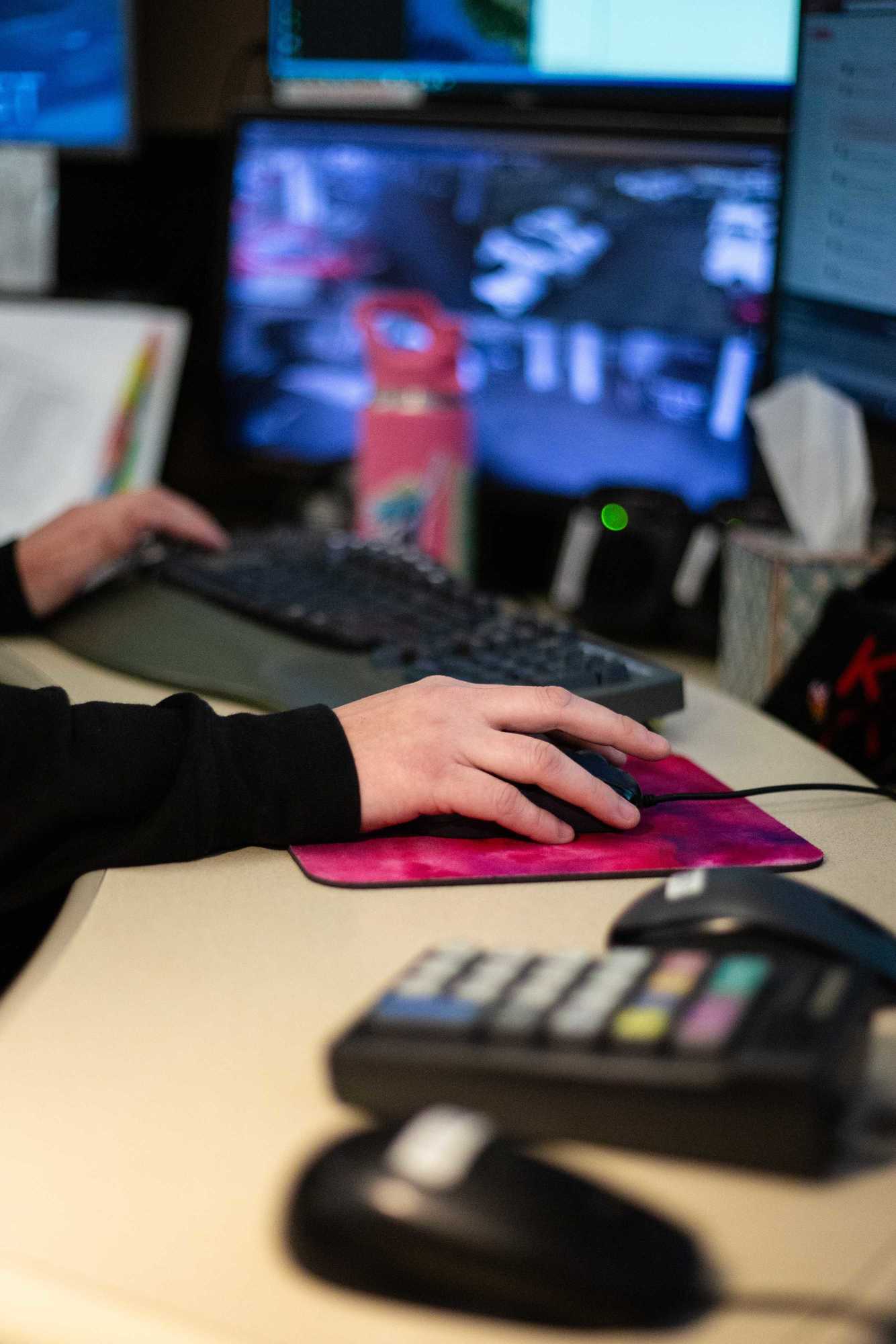 g that rapid response happen.
g that rapid response happen.
“We’re like orchestra conductors,” said Senior Dispatcher Robert Lowell, who’s worked BART dispatch for 21 years. “You’re telling the officer units where to go, when, and why. We’re the gateway that makes the department flow.”
When you consider jobs at a police department, you probably think of the obvious one: police officer. But there are a multitude of non-sworn, civilian roles that are crucial to the functioning of a well-oiled police department.
Dispatchers are the first conduit in a network of fast actions triggered by a 911 call. They’re staffing the phones 24 hours a day to connect those who may be witnessing or experiencing a crime with safety services. And they do it with impressive speed and dexterity.
“Staffing the phones” is a bit misleading. Dispatchers don’t simply answer calls; they’re also responding to texts from the non-emergency line and fielding messages from the BART Watch App. That’s not all. At any given moment, a dispatcher will have upwards of 10 computer tabs and programs open, each with a different but important purpose. They’re scanning camera feeds, analyzing a real-time map of every train in the system, and managing a program that collates active calls and available units. Each dispatcher’s desk has five monitors, three mice, two keyboards (one for the computer, one for the phone), and a foot pedal for the dispatch radio so they can call for units while typing information.
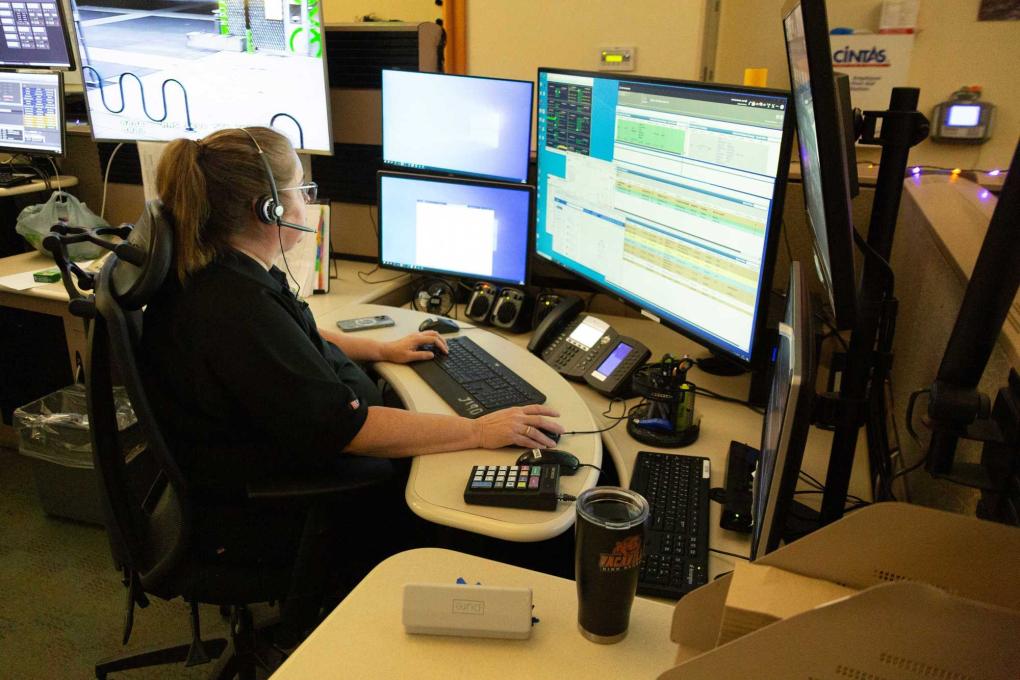
Communications Supervisor Patty McPeak pictured at her desk. McPeak has worked for BART for 29 years.
“Dispatchers have to multitask and must possess a lot of common sense,” said Communications Supervisor Patty McPeak, who’s been with BART for 29 years. “We need people with street smarts, not just book smarts. You have to use your entire brain in this job and juggle multiple things at once.”
The work of dispatchers intersects with multiple expertise: law enforcement, customer service, public health and social services, and even some behavioral psychology.
“We’re all really good at anticipating what suspects will do,” Dispatcher Fulmore said. “For example, if we get a call that someone just had a phone stolen on the concourse, we know the suspect will run to the platform to get on a train, so we stop the next train from entering the station. We have a lot of techniques to set officers up for success.”
Dispatchers do detective work, too, added Dispatcher Stacie Richardson, an 18-year veteran of the department who was essential in the arrest of Nia Wilson's convicted killer in 2018.
“I remember that day well,” she said. “I got a call from a guy, saying, ‘Hey, I got off the train at Fruitvale five minutes ago, and I think I saw the suspect onboard. It was going toward downtown Oakland.’” It wasn’t much info to work with, but his description of the suspect matched the warrant, so Dispatcher Richardson leapt into investigative mode.
“There were so many trains running at that time, but based off that little bit of info, I was able to track the right one down,” Dispatcher Richardson said. “I found the suspect on the security camera feed and was pretty certain it was him. I followed him on the cameras until he disembarked at MacArthur Station to board a Pittsburg-bound train. I held that train, alerted the nearest police unit, and within minutes, they arrested him.”
"Getting the guy doesn’t make it any easier for the family,” Dispatcher Richardson added. “But I know it gave them a sense of relief.”
(Note: To get help as fast as possible on a train, it’s important to take note of the car number, which tells dispatchers exactly what train you are on and where it is going. The car number is located above the doors on the inside of each end of the train car.)
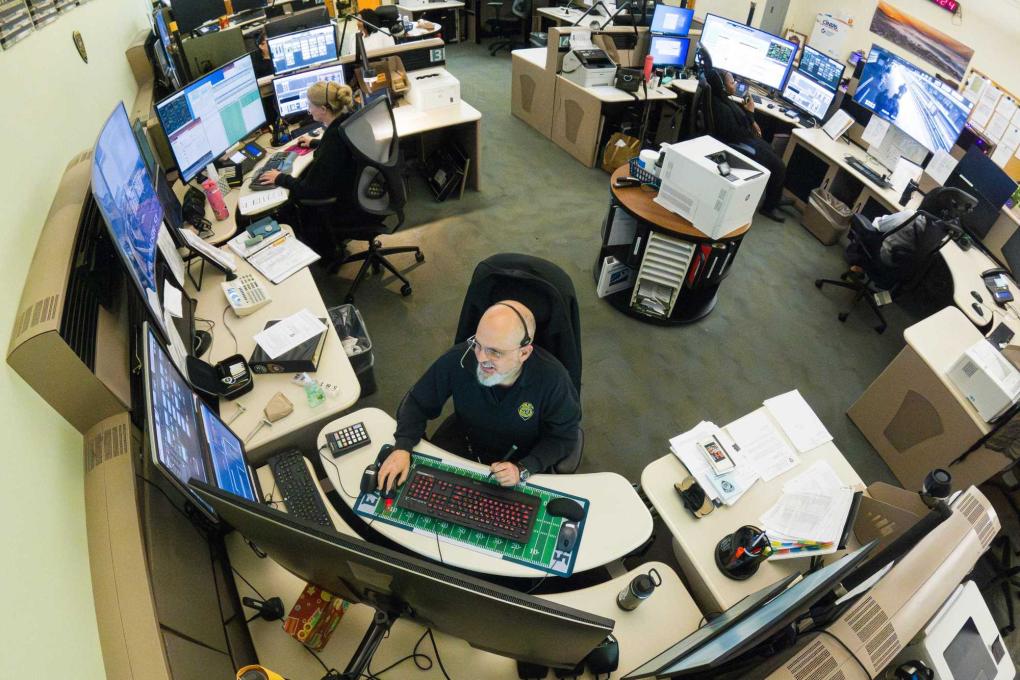
Dispatcher Robert Lowell smiles at his desk. Lowell has been deemed the team DJ.
Every BART dispatcher works the police radio channel for a few hours a shift. On the radio, they have the responsibility of prioritizing calls and dispatching units in a timely fashion, all while taking into account the availability of officers.
“Dispatchers are often coordinating train holds, assigning calls to units on the field, relaying real-time updates, and gathering information,” said Communications Supervisor Sabrina Castro. “The radio dispatcher is often interacting with Officers, Ambassadors, Crisis Intervention Specialists, Community Service Officers, Fare Inspectors, Amtrak Officers, Detectives, Deputy Chiefs, and Watch Commanders at any given time.”
Said Dispatcher Fulmore, “We can stop someone’s commute with just four numbers on a keyboard, so prioritization is critical.” Dispatchers don’t want to hold a train unless they absolutely must.
Dispatcher Fulmore said she never imagined she’d be working in a police department. She studied communications in college and figured she’d work in media.
“I’m still using that communications knowledge, just in a different way,” she said. “We need people from a variety of personal and professional backgrounds to accomplish what we’re trying to do in the dispatch center. There are very few jobs you can come into at the entry level.”
Dispatcher Patsy Hernandez said her previous career as a dental assistant helped prepare her for the job.
“In the dental office, I learned customer service, how to deal with different types of people, how to problem solve,” she said. “All of those skills prepared me for this work."
Newly hired dispatchers receive thorough training that lasts around a year. Training starts in the classroom followed by a three-week academy course for general policing knowledge, geography training in the field, phone training, and lastly, radio training. Those who are already familiar with BART tend to finish training earlier. You must know the BART map inside and out, how the railway operates, and understand the complex dance of trains moving through the system.
You might think the BART Police Dispatch Center is full of people shouting into phones and rushing to and fro. To the contrary, the room is dimly lit and peaceful – calmer than many open-floor offices. A mini waterfall bubbles peacefully in supervisor McPeak’s and Castro’s office against a sonic backdrop of clacking keys, low voices, and sometimes cackles as the dispatch partners lob jokes at each other across the room.
Dispatcher Lowell has been deemed the team DJ. During his shift, he spins his favorite tunes for the group – some Rolling Stones here, some Eric Burdon and the Animals there. He said it helps keep the good energy flowing and builds camaraderie.
With some training, dispatchers learn to let tough calls go, to talk them out with their partners, and to reach out to the peer support team when they need extra support. And supervisors Castro and McPeak are always looking for stress management techniques for their team; around Halloween, for example, they hosted a coloring contest with a $50 gift card for the best work.
“We decorate for the holidays, throw lots of baby showers, and you’ll find balloons all over the place for birthdays,” said Dispatcher Fulmore. “We’ve made this place a home.”
That’s part of the reason BART’s dispatch team has low turnover. Nearly half the team has worked at BART for more than twenty years. The most senior dispatcher, Evelyn Hammer, has 31 years at BART under her belt.
“We stay here,” said Dispatcher Richardson. “You look forward to your shift. It doesn’t feel like work a lot of the time, though it is definitely work.”
"But it’s meaningful work,” Dispatcher Fulmore added. “We’re part of the culture of community care in the Bay Area. We’re behind-the-scenes heroes.”
BART Board eases commute bike restrictions for extended trial
The BART Board of Directors voted tonight to modify existing commute period bike rules for an extended 5 month trial period from July 1-December 1, 2013. The move represents the next phase of testing to observe the impact of allowing bikes on board during busy commute periods. Starting July 1, bikes will be
BART staff available to speak at offices to promote transit
Heading back to office for work or sick of sitting in traffic?
BART staff will come to your office building and present about all the ways BART is improving service and safety.
We will take your questions and share insider tips.
Encourage your leadership to invite BART to your building. It can be a brown bag lunch, an all-hands meeting, or any format.
Remote presentations are also an option.
Please email [email protected] if you would like to arrange something.
Resources for sharing:
One page hand out about our Safe and Clean Plan.
View our sample presentation.
BART seeks public help in finding lost, elderly woman
Fremont woman with dementia and diabetes l ast seen at Fremont station BART Police is urgently seeking the public’s help in locating a 92 year-old Asian woman who desperately needs insulin. Lai Ying also has dementia and her family says she has the mental capacity of a four-year old. Ying is 5 feet tall with
Missing teen now home safe thanks to BART employees
Two alert BART employees at our Fremont Station this week played a critical role in finding a missing 15-year-old East Bay girl and getting her back to her family. On Wednesday, Station Agent Rachelle "Mimi" Powe was giving a foreworker trainee a tour of the Fremont Station when she saw a teenage girl in
BART hosts first of two interactive career fairs
BART hosted the first of two interactive career fairs Wednesday, February 26th at North Berkeley Station, featuring dozens of job and internship opportunities as well as hands-on experiences to learn about careers at BART and its community partners.
Job seekers of all backgrounds are encouraged to attend the fairs to explore internship learning opportunities currently posted.
The BART Police department, with over a dozen vacancies for entry level police officer and police dispatchers, hosted activity stations at North Berkeley to educate attendees about different roles within the department, including an agility wall, a dummy drag, and an evidence van demonstrating fingerprinting techniques.
On the maintenance side, activity stations offered hands-on demonstrations such as full-size replica train tracks and power washing.
BART’s Talent Recruitment Team offered a special course on “How to Successfully Apply for a BART Job” to teach attendees about the application process.
The first event was held in a parking lot at North Berkeley Station from 10 am to 2 pm February 26th.
A second career fair is scheduled for Thursday, March 6th at Concord Station during the same hours.
An Affordable Housing and Sustainable Communities Program grant funds the career fairs. It’s part of California Climate Investments, a statewide program that puts billions of Cap-and-Trade dollars to work reducing greenhouse gas emissions, strengthening the economy and improving public health and the environment — particularly in disadvantaged communities.